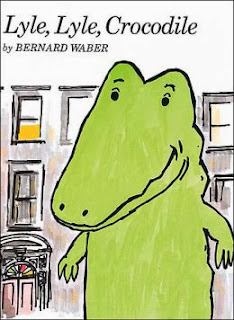


There was something about them that made me think of the early days of children's publishing when the palette was distinctly limited. I grabbed all three. Here's a round-up of reviews.
Once upon a Northern Night by Jean E. Pendziwol. Illustrated by Isabelle Arsenault. unpgd. Groundwood Books, July, 2013. 9781554981380. (Borrowed from the public library.)
In a perfect pairing of picture and text, Once upon a Northern Night is a terrific bedtime story for a cold winter's night, especially if snow is in the forecast. The repetition of the title in the first line of each new verse is lulling and the imagery is vivid. The mostly black and white paintings, depicting a variety of nocturnal animals in the snowy landscape caused me to wish for a blanket and is certain to cause a young listener to snuggle a little closer. Little pops of color, such as the last of the apples on a tree, the yellow eyes of an owl, and orange fox tail, draw the eye, though I could've done without the blush on the prancing rabbits, personally. Still, a lovely addition to any library.
Lifetime: the amazing numbers in animal lives by Lola M. Schaefer. Illustrated by Christopher Silas Neal. 40 p. Chronicle Books LLC. September, 2014. 9781452107141. (Borrowed from public library.)
There's a bit more color in this intriguing and unique concept book than the cover implies, but the feel is definitely retro as each double-page spread depicts the behavior or event that is significant in each of the eleven animals depicted. "In one lifetime, this spider will spin 1 papery egg sac." Will young readers stop to count the 200 spots on a giraffe or the 550 eggs an alligator will lay over a lifetime? Not sure, but they are definitely countable.
Pages containing expanded information about each animal, including the scientific names and average life spans extend the age range for this cross-curricular picture book. Is this a science book or a math book or a book that shows that science and math are everywhere? A page explaining what an average is follows and the volume concludes with an author's note proclaiming her love of math and ending with two word problems.
How to Hide a Lion by Helen Stephens. 32 p. Henry Holt & Company Books for Young Readers, October, 2013. 9780805098341. (Borrowed from the public library.)
For some reason, this one made me think of the Lyle Crocodile books by Bernard Waber.
I couldn't find my own copy of the book and when I retrieved this cover image online, I wondered why I thought the two were similar. Perhaps it's the incongruity of the animals as pets?
All lion wants is a hat when he strolls into town on a hot day. Unfortunately, the townsfolk aren't welcoming. They chase him and he finds refuge in a play house belonging to a girl named Iris, who wasn't afraid of lions. She sneaks him into the house because, "moms and dads can be funny about having a lion in the house," and tends to the lion. Finding the perfect hiding place proves difficult since the lion is just, "too big, too fluffy, and too heavy."
Of course, after a bit, the jig is up and poor lion is on the run again. He finds a hiding place in the middle of town where no one, not even Iris notices him. When he notices and apprehends a pair of burglars stealing the mayor's candlesticks, the townsfolk are amazed and Iris gets to say, "I told you so." Lion gets a parade and the mayor tells him that he can have anything he wants. Can you guess what lion would like?
There's a lot more color in this one compared to the other two. Perhaps the retro feel I'm getting is from the sketch-like lines or the cartoonish, yet expressive face of the lion. Whatever, this is a delightful story to share one-on-one or as a read aloud for the pre-school and lower elementary grades.
So, is the art trending backwards or are these three just an interesting coincidence?




No comments:
Post a Comment